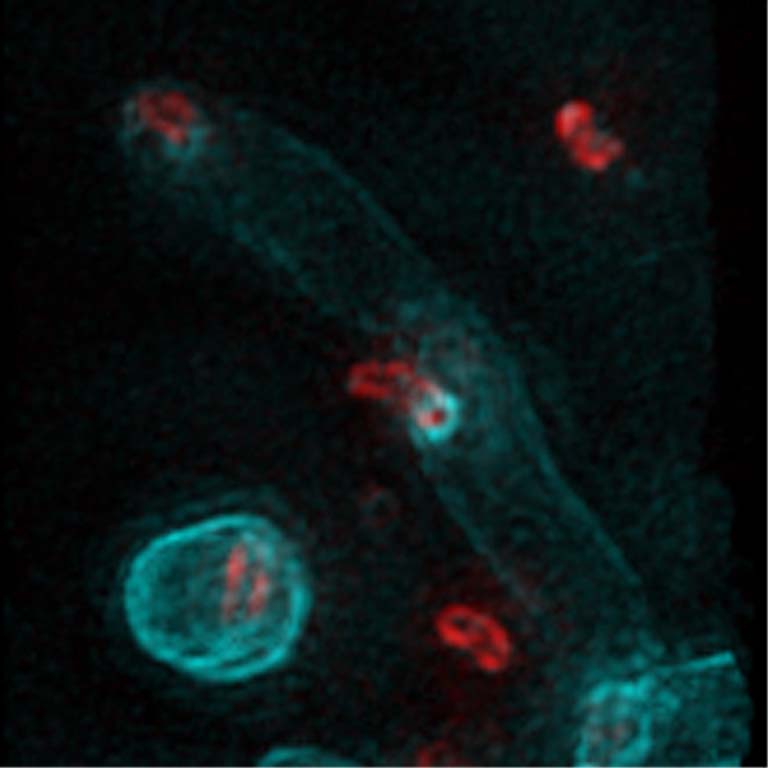A microbiological mystery of how one bacterium could invade another and grow inside it without breaking the other bacterium instantly has been illuminated by scientists at the University of Nottingham and Indiana University in the USA.
The Nottingham scientists are investigating the invasive predatory bacteria Bdellovibrio bacteriovorus as a potential therapeutic to kill antibiotic-resistant pathogenic bacteria. The Indiana scientists are investigating what bacterial cell structures are made of and how they are built. To do this they have developed and used fluorescent D amino-acids (FDAAs)—coloured substitutes for natural substances found in bacterial cell walls. This was combined with super-resolution microscopy to great effect in a new paper published today in Nature Microbiology.
The teams have joined forces and discovered that the invading Bdellovibrio bacterium forms a tiny reinforced molecular ‘porthole’ in the wall of the host bacterium, squeezes through this and then seals it up from the inside. This process is like cutting and welding a porthole on a ship but on a molecular-scale.
Professor Liz Sockett from the University of Nottingham said: “The bacteria being invaded are 100 million times shorter than a ship like the Queen Mary 2, and the invading bacteria are 500 million times narrower. The materials used for the welding aren’t metal of course, but are natural D-amino-acids. These are mirror image forms of the ‘L’ amino-acids found in the proteins of foods and of our bodies.
“We discovered a second process where the invading bacteria effectively ‘plaster’ the inside of the bacterium they are invading, again using the D amino-acids. This makes the inside of the bacterium a more reinforced home for the Bdellovibrio to live inside. This is important as a previous paper showed that the invaded bacterial walls are initially rounded-up and weakened early in the invasion process.”

 The College of Arts
The College of Arts